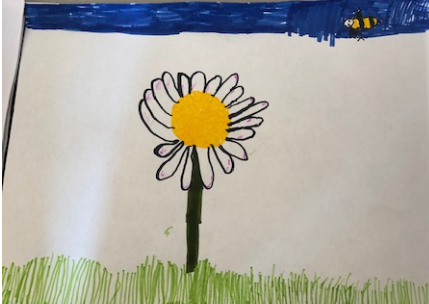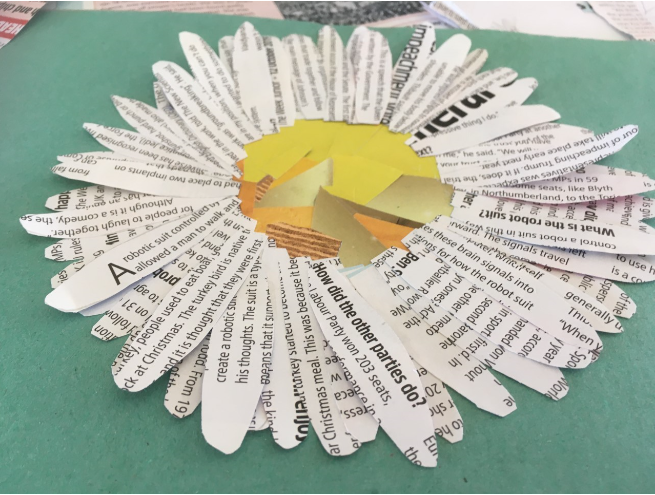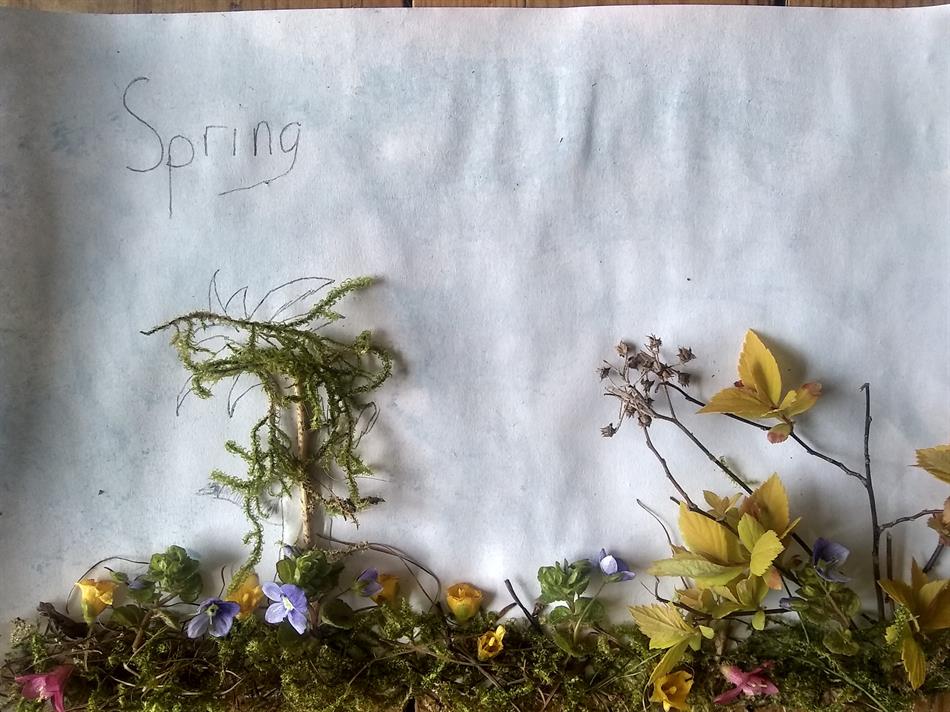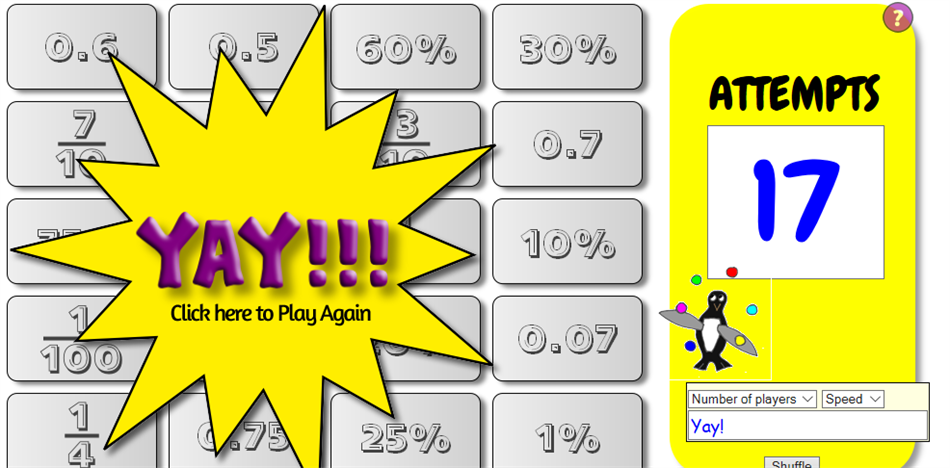Monday 30th March
29 Mar 2020
Good morning class 4  – Monday, my favourite day of the week!! Thanks for your pictures of the nature in your garden. Here's some I was sent. I love the use of paper to create the leaves - good effort! Bea created her image using natural materials and water colours; what an excellent job Bea, you've arranged your spring scene to make it vibrant and full of texture
– Monday, my favourite day of the week!! Thanks for your pictures of the nature in your garden. Here's some I was sent. I love the use of paper to create the leaves - good effort! Bea created her image using natural materials and water colours; what an excellent job Bea, you've arranged your spring scene to make it vibrant and full of texture 






Time table
P.e – 9am start
Maths
English
reading plus
P.E – Joe Wicks' p.e class https://www.youtube.com/watch?v=K6r99N3kXME&fbclid=IwAR2YYO8DSRkepnwzNTuksmbXDUcJg7WhYibGuz2HG4_bStk-37ipg4DWGMQ&app=desktop
Maths – Both groups have the same task today.
Today we’re going to finish off fractions. Remember that fractions, decimals and percentages are all just ways of showing parts of a whole. For example, a half can be written as: 50%, 0.5 and ½.
We call them equivalent when they’re the same; that’s what equivalent means.
We can’t know every possible fraction’s decimal/percentage equivalent – that would be too hard! For example, I don’t know what 1/7 is as a decimal (I bet year 6 know how to find out though)
But some fractions we do just need to know/learn what they are because they’re common, just like we know what ½ is. I’d say they are – ¼, ¾, 1/10 (up to 10/10) 1/5, 2/5, 3/5, 4/5, 1/3, 2/3 and even 1/8 – do you know those already? I bet a lot of you do! If you don’t though, imagine you had a whole. A whole is the same as ten tenths (0.1) so if I didn’t know what 1/5 is as a decimal then I could divide my whole (which I split into ten 10ths) into 5 to find 1/5 and if you did that you’d see each 1/5 has 0.2. So 1/5 is 0.2 as a decimal.
P.S – Don’t forget percentages are dead simple to turn into decimals as are fractions out of 100 as they’re both out of 100. 17% = 0.17 and 31/100 = 0.31.
Everyone have a go at this link – can you match them with less attempts than me? 17 attempts – now that was impressive I thought! (evidence below  )
)
https://claritymaths.uk/games/memory/fractions-decimals-percentages.html

Task – group one – complete column A and B of page 8 in your packs
(for Q25 onwards you’ll need to convert them so they’re in the same form E.G ½ and + 0.1 (1/2 = 0.5 so now that’s easier to add to 0.1)
P.S – Q21 and Q22 – Hmm, they’re similar – I think place value will be important here!
Afterwards play both of these games
http://www.sheppardsoftware.com/mathgames/percentage/BalloonPopPercentFraction_1.htm
https://www.mathplayground.com/Decention/index.html
(You could try group 2’s also)
Group two – complete column C of page 8 in your packs– there are some fractions in there which I don’t know what they are as decimals but I do know how to find out – let’s say I didn’t know what 1/8 was as a fraction then I could divide the numerator by the denominator (see picture below)

Now, potentially for fractions like 2/7 you’re going to get a huge never-ending, long number, but really you only need to find the first 2 or 3 digits to be able to compare it. (you can check too by just typing 2 ÷ 7 into a calculator)
When you’re finished play these games
https://www.topmarks.co.uk/Flash.aspx?a=activity08
http://www.math-play.com/Fractions-Decimals-Percents-Jeopardy/fractions-decimals-percents-jeopardy-game_html5.html
English:
We’re recapping clauses! Clauses are parts of a sentence. They always contain a verb. You can have three types of clauses; can you remember what they are?
Today’ we’re just looking at main clauses and subordinate clauses.
Main clauses are what the sentence is about; the main point of the sentence. Every sentence has a main clause and some sentences only have a main clause. Here are some examples of main clauses:
It was Jack’s birthday yesterday.
Thomas loves Leeds United.
Tilly rode her horse through the village.
You get the idea? They’re just standard simple sentences which make sense alone.
Subordinate clauses extend those main clauses by giving you information. If you’re going to extend a sentence then you’ll need to use a conjunction to do so. Subordinate clauses wouldn’t make sense on their own and really need the main clause or people would be a little confused. Here are some examples:
Because she didn’t like it.
So they lived happily ever after.
Despite there being a fire-breathing dragon outside her frontdoor!
You see, they didn’t make sense. Here’s a sentence with a main and a subordinate. Can you find the main and subordinate within it?
My sister made an apple pie since we had hundreds of apples on our tree.
Can you spot the two? You should spot a conjunction which is joining the subordinate to it.
Main = My sister made an apple pie.
Main clauses don’t always have to come first though, I could have written it this way too.
Since we had hundreds of apples on our tree, my sister made an apple pie.
The only difference being that I needed to use a comma after the subordinate ended to join it.
Task: Find the sheet 5 (there’s a cat sleeping on it.)
Neatly underline or highlight the main clause. Make sure you read it carefully first and when you think you’ve got it, you could say it aloud to someone and if it makes perfect sense to them, it’ll be a main clause.
Please then also do sheet 6 - underline/highlight the main clause.
Reading plus
Finally do one reading plus.
Now, this is just a bit of fun if you want to do it; since we’ve been doing War Horse I thought you could make your own. Apparently, you can make an origami horse which walks on its own. The website is below – I thought it looked quite fun! If you do manage to make one, I’d love to see it so email it in
https://frugalfun4boys.com/paper-horse-that-walks/?fbclid=IwAR3SossY8hkHlVkp9nmkvdi1NdFyENI9_zGTnQ2QISpSul45p_CxWNvwdGA

That’s it for today,
Mr Breckon.